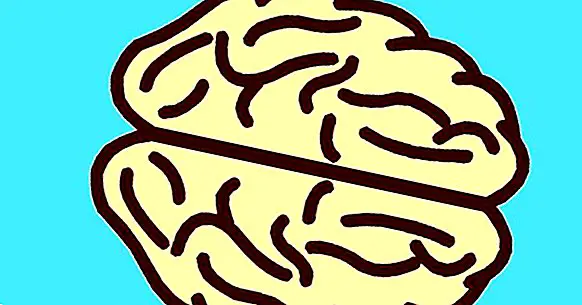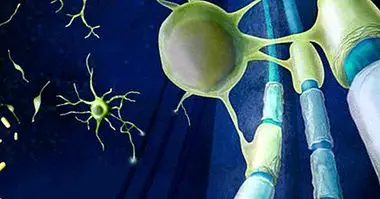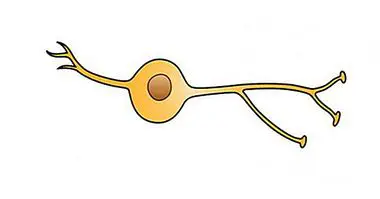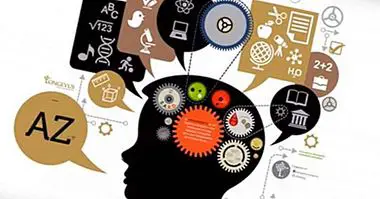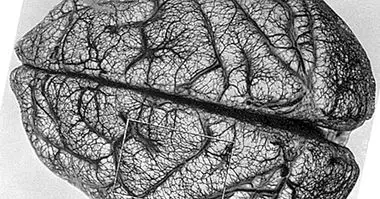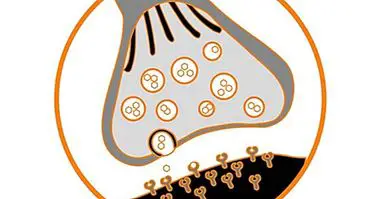Neurosciences: the new way of understanding the human mind
The brain study is one of the most important facing science today. Thanks to various technologies such as scanners that let us know what our brain is like and how it works, Human Genome Project, to the application of genetics in behavior , have been able to discover incredible things of that small organ of less than a kilo and a half that we have in our heads.
Things that we could not discover until the "decade of the brain" began in the 90s, with which a wave of new sciences called cognitive psychology and neurosciences, which includes the aforementioned, was unleashed. These are disciplines that remain in force and that are revolutionizing all areas of our lives.
What are they and why approach the study of neurosciences?
The two greatest mysteries of nature are the mind and the universe.
-Michio Kaku
One of the last emerging paradigms within the field of psychology is that of cognitive psychology . This was developed in three stages. The first was characterized by its institutionalization, which ranged from its inception until the eighties. In this phase, the metaphor of the brain dominates as a computational computer. The second stage is that of connectionism in the eighties; and the last one was the emotional cognitivism, in the framework of the so-called "decade of the brain". The latter was also the bridge for the emergence of neurosciences .
It is important to mention cognitivism because most of the neurosciences are based on human cognition (learning, memory, perception, etc.) which gives rise to the appearance of cognitive neuroscience , which I will explain later.
Antecedents of the neurosciences
The so-called "brain sciences" have their antecedents in the first locations of cognitive functions of the brain, which occurred in the first years of the 19th century, experimental psychology , the psychophysiology and the great contribution of computer science and in particular to the development of Artificial Intelligence, as well as the incorporation of molecular genetics in the 80s, although pioneering incursions had already been made of great importance in the use of genetic approaches for the study of the brain and behavior since the 60s.
Within the context of genetics, another of the antecedents and tool of the neurosciences was the Human Genome Project, whose importance is incalculable, since it allowed to recognize the so important role played by genes in the construction and codification of the brain.
In the words of Philip J. Corr , "the Human Genome Project It has opened a completely new perspective on the role of genetics in psychology. "And not only in psychology but in all the sciences that interact and work with the brain, because as the biological science professor once mentioned. and neurology at Stanford University Robert Sapolsky , we can not talk about behavior (and I add, about the brain) without taking into account biology.
Approaching a definition of neuroscience
As a formal definition (based on different readings), I would define neurosciences as the study of the biological basis of human behavior . I want, now, to add another definition, that of Cognitive Neuroscience; defined by Carles as "the discipline that seeks to understand how brain function gives rise to mental activities, such as perception, memory, language and even consciousness". Despite its few years of existence, this discipline has experienced the multiplication in its studies that, among its examples, include visual attention, vision, memory, and consciousness.
Following the so-called "decade of the brain" (although perhaps the most appropriate is going to be called "the twentieth or century of the brain"), Cognitive Neuroscience and neurosciences in general have seen their branches of research flourish, thus extending to fields such as law, economics, psychology, gastronomy, etc. The rich variety of applications of the neurosciences are a symptom of the presence of these investigations in all areas of our lives.
The neurosciences they have been in charge of explaining how the mind works based on its biological condition rooted in the brain . Its importance lies in that now, thanks to high-tech scanners designed by other branches of science, have revealed secrets of the brain that make what was once part of science fiction; today it is of formal science.Now we know that it is necessary to know the brain in order to understand it and design strategies to improve our behavior and, thus, solve the big problems in terms of public policies related to psychological problems .
Discovering how we think and feel
In the same way, the neurosciences have allowed us to show ourselves as we are, as is our being biological (I make this separation to suggest the relationship between our animal side and our rational part). Denying the role and responsibility of the brain in our behavior will not change our condition.
Further, the discoveries about our brain have moral implications . Just as it says Steven Pinker in The Rasa Tábula"The refusal to recognize human nature is like the shame that sex produced in Victorian society, and even worse: it distorts science and study, public discourse and everyday life." That is why we must support a science that is allowing us to know ourselves, to know how we are and why we are like that. And we must do it without fear and betting on improving our human condition in terms of knowing our human condition, that is, seeing our human nature with a human face.
Another reason why people, scientists and, especially, psychologists should approach the study of neurosciences is because this field of study is breaking myths and replaces classical problems, but now with a more rigorous approach from the point of scientific sight. One of those problems is that of the mind-brain relationship, this has stopped being "a monopoly of philosophy" (in the words of Giménez-Amaya), to become a subject where multiple disciplines try to give a solution, always taking Consider the function of the brain.
These new sciences included in neuroscience are revolutionizing all aspects of daily life, for example, now public policies that take into account the brain in education, law, medicine, technologies are made . Countries like the United States of America have complete projects, similar to the Human Genome, related to neurosciences.
The neurosciences as a tool of the psychologist: we understand better the machine
"The brain, like it or not, is a machine, scientists have come to that conclusion, not because they are mechanistic spoilers, but because they have accumulated evidence that any aspect of consciousness can be linked to the brain."
-Steven Pinker
Of course, the organ that we have inside the skull is so difficult to understand that until now it is considered practically the most complex object in the solar system. As Carl Jung expressed it: "In each one of us there is another we do not know".
That capricious animal addicted to carbohydrates is the most complex material in the universe and that same animal is the object of some disciplines such as neurosciences, which may well be a tool for others such as psychology. The neurosciences show us the biological side of the mind and the brain, and in it there are some issues such as consciousness, cognition. The object of study of this discipline is responsible for our behaviors and other issues more than those in charge of studying psychology, and that is why it is important to rely on these tools that bring us closer to that biological part responsible for most of our behavior .
Our brain weighs one kilo two hundred grams and is composed of two types of cells: neurons and the glia . All people harbor hundreds of billions of these microscopic bodies. And, as Eagleman says, "each of these cells is as complicated as a city. And each of them contains the entire human genome and circulates billions of molecules in intricate economies. "
Since the consolidation of neurosciences, psychologists have undertaken the challenge of developing a psychology based on concrete and isolatable biological data.
Conclusions and contextualization
Neurosciences have had a long history through the history of brain understanding. For most of the history of humanity we have been unable to understand how the brain and mind work. The ancient Egyptians considered the brain a useless organ, Aristotle believed that the soul inhabited the heart and others, as Descartes believed that the soul entered the body through the tiny pineal gland. After the "decade of the brain" everything changed and we finally started, thanks to new technologies and discoveries, to really know the brain. What we did not learn in the history of mankind, after the nineties, we began to discover and learn, but we are hardly understanding and assimilating it.
However, there are still many people, in the academic, culture and common people, who they refuse to recognize their nature and accept new ways of understanding us, of understanding our brain, our machine . The negation and resistance of many people to the neurosciences is in the belief that biology comes to strip us of our human condition, it would end our moral part and reduce us to no more than animals guided by our impulses and in that case they could justify things like rape, incest or murder.
But contrary to those beliefs are those that say such renowned scientists as Steven Pinker or David Eagleman who propose that by showing the human being without fear what it is, they can make real programs of recovery, predict and control behaviors that could harm the society and themselves. The refusal to recognize what happens in our machine will not help to give answers about what happens in it, and that can have a social cost.
Bibliographic references:
- Avedaño, C. (2002). Neuroscience, neurology and psychiatry: An inevitable encounter. Asoc. ESp. Neuropsiq. Retrieved from Scielo: //scielo.isciii.es/pdf/neuropsiq/n83/n83a05.p ...
- Carles, E. (2004). Historical and conceptual approach to Cognitive Neuroscience. Cognitive, 141-162.
- Corr, P. J. (2008). Psychogenomics In P. J. Corr, Biological Psychology. Mcgrawhill.
- Eagleman, D. (2013). There's someone in my head, but it's not me. In D. Eagleman, Incognito. The secret lives of the brain (page 9). Anagram.
- Giménez-Amaya, J. m. (May-August 2007). Dialnet. Retrieved from Dialnet: //dadun.unav.edu/handle/10171/10926
- Kaku, M. (2014). Introduction. In M. Kaku, The future of our mind (page 22). Penguin Random House.
- Pinker, S. (2003). The Blank Slate. In S. Pinker, The Blank Slate (page 703). Paidós.
- Tortosa, G. and. (2006). History of Psychology. In G. and. Tortosa, History of Psychology. Macgrawhill.
- Zapata, L. F. (August-December 2009). Evolution, brain and cognition. Retrieved from Scielo: //www.scielo.org.co/pdf/psdc/n24/n24a06.pdf

